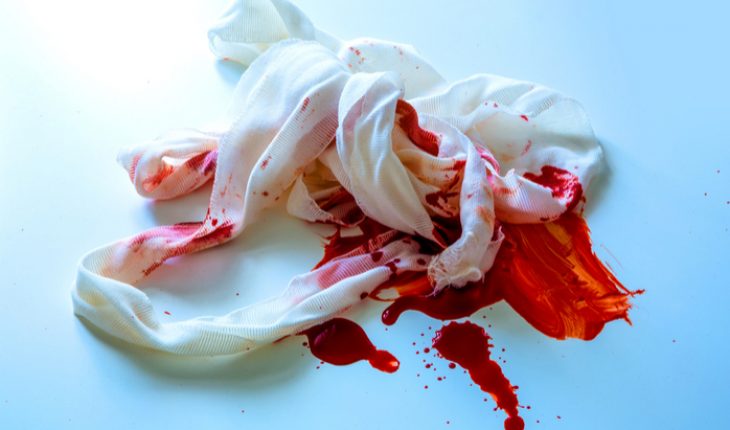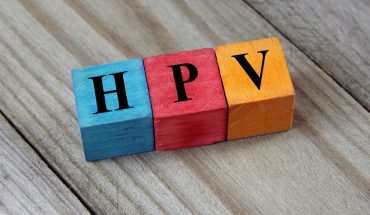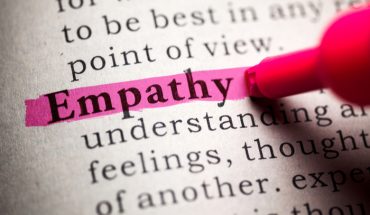Sadly, the news has been full of stories of stabbings across the country these past few weeks, as knife crime in the UK continues to rise. Catastrophic bleeding doesn’t only happen as a result of stab wounds though. It can happen any time, anywhere and can occur as a result of DIY injuries, accidents in the kitchen or even after a slip of a saw whilst cutting branches in the garden.
Catastrophic bleeding doesn’t only happen as a result of stab wounds though. It can happen any time, anywhere and can occur as a result of DIY injuries, accidents in the kitchen or even after a slip of a saw whilst cutting branches in the garden.
There are some very simple steps to follow that could help enormously, so read on to find out what to do for treating major bleeding and shock, should you be first on the scene at such an accident.
Major Bleeding
If someone is bleeding the priority is to stop the blood coming out! ALWAYS WEAR GLOVES WHEN DEALING WITH BLEEDING
It is never a priority to wash a major injury – it will be cleaned in hospital.
How to help someone who has been stabbed or is seriously bleeding
- Sit or lie the person down – to manage shock and prevent them from feeling dizzy and faint
- Examine the area to see if there is anything stuck in the wound – if there is do not remove it
- Elevate the bleeding area above the level of the heart to slow down the bleeding (although latest guidelines no longer recommend elevation as this alone will not stop bleeding and pressure is more important)
- Pressure – apply direct pressure on the wound to stop the blood coming out.
Shock
Shock is ‘a lack of oxygen to the tissues of the body, usually caused by a fall in blood volume or blood pressure.’
Shock occurs as a result of the body’s circulatory system failing to work properly, which means that the tissues of the body, including the heart and the brain, struggle to get sufficient oxygen. The body’s response to this is to shut down the circulation to the skin – causing it to become pale, cold and clammy. The heart speeds up as it struggles to get sufficient blood supply and oxygen and to draw the blood away from the gut, causing the casualty to feel sick and thirsty. They may also feel anxious, dizzy and a bit confused as their brain suffers from the lack of oxygenated blood too.
How to help someone who has been stabbed or is seriously bleeding
If the person is pale, cold, clammy and showing signs of shock, or if there is a lot of blood – help their circulation by lying them down and raising their legs. Elevate the bleeding wound and apply direct pressure to control the bleeding.
Keep them warm and get emergency help.
Symptoms of shock:
Firstly:
They will have a rapid pulse
They will be pale, cold and clammy
As shock develops:
Grey-blue skin colour and blue tinge to the lips – cyanosed
Weak and dizzy
Nausea and vomiting
Thirst
Shallow, rapid breathing
As the brain is struggling for oxygen:
May become restless and possibly aggressive – a sense of ’impending doom’
Yawning and gasping for air
Eventually they will lose consciousness and become unresponsive and they may stop breathing
How much blood can you afford to lose?
Children have far less blood than adults. A person has approximately 0.5 litres of blood per 7kgs of body weight or one pint of blood per stone (although this does not increase if someone is over weight). An ‘average’ adult has roughly 10 pints / 6 litres of blood – if they lose about a 5th of their blood volume it can cause the body to shut down and go into shock.
The loss of a tea cup full of blood could be fatal for a baby – however please note that head and facial injuries bleed copiously and can look far more scary than they are – a tea cup full of blood would make a major mess!
If a casualty loses a substantial amount of blood – more than 40% of their blood volume, the body is no longer able to compensate for that amount of blood loss; and they will develop hypovolaemic shock. Hypovolaemic shock is a low volume of blood causing failure of the circulatory system, if untreated they will die.
If someone is bleeding extremely heavily from either a major artery or vein, they can lose a lot of blood very quickly and the bleeding is likely to pulsate in time with the heart. This is more pronounced with an arterial bleed, but can also happen with a venous bleed too. With extremely heavy, potentially catastrophic bleeding an adult could easily lose 40% of their blood volume in 3-4 minutes and this could be even quicker when dealing with children.
The treatment of all bleeding remains the same:
Encourage the casualty to sit or lay down in the most appropriate position for the location of the wound and the amount of blood lost – if they are feeling dizzy and showing early signs of shock, raise their legs.
Examine the wound to rapidly assess the type and extent of bleeding
The source of the bleeding
Whether there are any foreign objects embedded in the wound – if so, do not remove them as they will be stemming bleeding, but apply direct pressure either side of the object.
Apply direct pressure to try and control bleeding – if the bleeding is controlled with this direct pressure, keep holding for 10 minutes as it takes this amount of time for clots to form.
Once bleeding is controlled, dress the wound – if the wound bleeds through the first dressing, apply another on top. If the wound bleeds through the second dressing you should consider alternative options to stop the bleeding.
The first step when treating a catastrophic bleed is always to apply direct pressure and direct pressure is still likely to be the first and only solution needed for the casualty.
Please note:Tourniquets and haemostatic dressings have been introduced as additional options to treat severe catastrophic bleeding; however direct pressure remains the main choice of treatment and it will control bleeding in the vast majority of occasions. The European Resuscitation Council 2015 guidelines state that haemostatic dressings and tourniquets should be used when direct pressure is either not possible or not effective.
In environments where a catastrophic bleed is likely; tourniquets and haemostatic dressings should be an integral part of the first aid kit and all First Aiders should be trained in their use.
For the general public; you are highly unlikely to need to use a tourniquet, however understanding how to improvise and how and when to use one, could save lives if you were involved in a major medical accident or emergency.
One of the easiest way to make an improvised tourniquet using the contents of a standard First Aid kit is to use a triangular bandage folded into a broad fold bandage and tighten the tourniquet using your scissors as a windlass (if you have access to cutlery, such as a table knife, this would be even better as otherwise you no longer have your scissors available to use!)
Please note: A tourniquet should be at least 4cm wide to prevent localised damage to nerves tissues.
Tie the bandage around the bare limb –on a single bone (if the lower part of the arm or leg are bleeding, you should tie the tourniquet on the upper part, where there is only one bone rather than two).
The tourniquet should be at least 5cm above the wound (or 5cm above the joint if the wound is on the lower limb – never place a tourniquet over a joint).
If there’s a clean cut through an artery, for example deep incised wound, the artery can contract back up the arm or leg. This is why, it is recommended to place the tourniquet at least 5cm (or 2 inches) above the wound.
You may find other guidance on the positioning of a tourniquet, such as applying the first tourniquet mid-point over a single bone. This advice is also acceptable, so long as the tourniquet is positioned proximal to the wound (closer to the trunk of the body).
How to help someone who has been stabbed or is seriously bleeding
Place the knife or your scissors on top of the knot and tie another knot on top of them.
How to help someone who has been stabbed or is seriously bleeding
Use the knife or your scissors as a windlass to wind round and tighten the tourniquet.
How to help someone whose been stabbed or seriously bleeding
The windlass can be secured either by tying another triangular bandage to stop it unwinding or by wrapping and tying both ends of the triangular bandage around the ends of the windlass to ensure it remains in place.
It is important to note the exact time that the tourniquet was applied and to arrange for urgent transfer for medical help – ensure you tell them where and when the tourniquet was applied.
Please note it will be extremely painful for the casualty to have a tourniquet, but it is absolutely vital that the tourniquet is applied tight enough to entirely stop the bleeding.
If a tourniquet is not on tight enough it can make things worse as it can occlude the veins, but arteries may be harder to stop as they are less easy to get to and if the venous return is stopped by the tourniquet, the only place for blood to come out is from the wound.
NEVER be tempted to loosen or remove a tourniquet. Once applied the tourniquet should ONLY be removed by a doctor in a hospital setting.
- What is a seizure? - 13th March 2025
- Febrile Convulsions and Seizures in Children - 13th March 2025
- Why women are less likely to receive CPR or survive cardiac arrest - 6th March 2025






